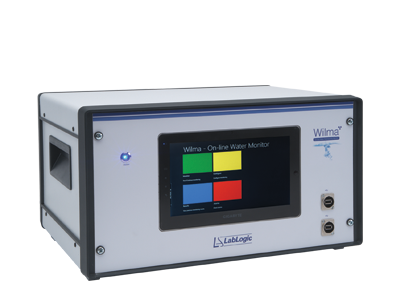USEPA Publishes Report on LabLogic's 'Wilma' Water Monitor Evaluation
03/07/2014

The United States Environmental Protection Agency (USEPA) has published a public report on their operational experiences with LabLogic's 'Wilma' system. Wilma is a unique instrument and software package that has been designed specifically for monitoring and analysing radionuclide levels in water samples.
The document highlights the background development of the instrument, a project conceived originally through collaboration between the USEPA (led by Physical Scientist John Hall) and LabLogic, as well as summarising key experimental data and findings from an intensive evaluation period that spanned a period of nearly two years. In particular, the report focuses on the comprehensive testing and evaluation programme that was undertaken at the National Homeland Security Research Center Water Station in Cincinnati, OH and the National Air and Radiation Environmental Laboratory in Montgomery, AL.
Key findings from the report highlight the system's suitability for the unattended monitoring of water samples at a rate of four per hour over periods of up to 30 days in a rugged environment. In addition, the background rate and counting efficiency was found to be sufficient to give a detection limit well in excess of background plus three sigma for samples of the key environmental radionuclides 3H (74 pCi/L), 90Sr (1120 pCi/L), 137Cs (1100 pCi/L) and 241Am (1310 pCi/L). These sample activity concentrations were set to reflect the Department of Homeland Security's Protective Action Guide (PAG) level for drinking water.
Following the recommended system enhancements outlined in the report and through dialogue with the USEPA, LabLogic has redesigned the instrument to incorporate a number of additional features and improvements in terms of the fluid management, integration of all components into a single, rugged casing and the adoption of a Windows 8-based touch-screen tablet user interface. In addition to this, LabLogic is now exploring wider applications for the Wilma system, including effluent monitoring in the vicinity of nuclear power plants, the monitoring of groundwater for potential contamination and for homeland security applications.
Dr. Tom Deakin from LabLogic said "We are delighted with the outcome of the USEPA report. We have worked hard alongside the USEPA over a number of years to develop this unique and reliable system. It's great to see that the results are now starting to show. However we won't stop there, we will continue to look to improve Wilma and explore new markets in which it can be utilised."
